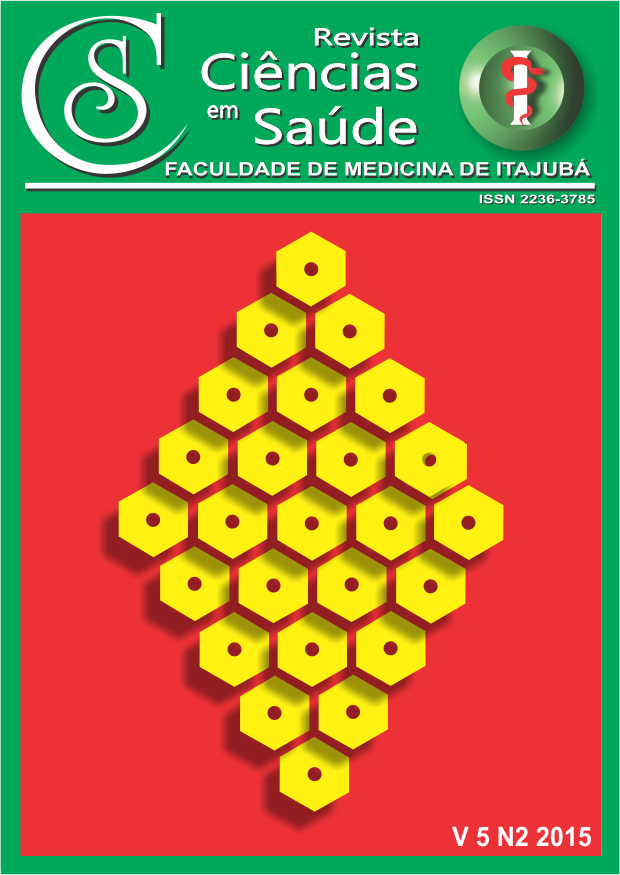Estudo Comparativo da Ação Bactericida do Mel sobre Staphylococcus aureus/Comparative Study of the Honey Antimicrobial Activity on Staphylococcus aureus
Main Article Content
Abstract
RESUMO
Objetivo: Analisar, a partir da metodologia microbiológica, a ação bactericida dos diferentes tipos de mel, segundo sua florada de origem. Materiais e Métodos: foram adquiridas três amostras de cada tipo de mel, segundo sua florada de origem, sendo eles: Flores de Café, Cipó-Uva, Assa-Peixe, Limão, Laranjeira, Eucalipto e Silvestre. Os discos foram preparados sendo embebidos em mel, e mantidos em estufa para secagem. Estes foram então colocados em contato com placa de Petri, previamente preparadas com Ágar Nutriente, contendo Staphylococcus aureus, e colocados em estufa para secagem. Após 24 horas, observou-se se houve inibição da cepa bacteriana, formando halo ao redor do disco. Resultado: Notou-se, na leitura das 21 placas, que nao houve diferença significativa nos halos de inibição formados pelos diferentes tipos de mel testados. Conclusão: Pelo estudo realizado, pode-se concluir que não há diferença na ação bactericida, sobre cepa de Staphylococcus aureus, entre os diferentes tipos de mel segundo as floradas de origem testadas.
Palavras chave: Anti-Infecciosos, Mel, Staphylococcus aureus, Faringe.
ABSTRACT
Objective: To analyze, according to microbiological methodology, the bactericidal action of different ypes on honey, according to the flowering origin. Materials and Methods: three samples of each types of honey were acquired, according to the flowering of origin, namely: Coffee Flowers, Vine-Grape, Assa-Peixe, Lemon, Orange, Eucalyptus and Sylvan. The disks were prepared by being soaked in honey, and were kept in a kilnfor drying. These were then placed in contact with Petri dish, previously prepared with Nutrient Agar, containing Staphylococcus aureus, and placed in kiln for drying. After 24 hours, it was observed if there was inhibition of bacterial strain, by forming a halo around the disk. Results: It was noted, in the reading of the 21 plates, no significant difference in the inhibition halos formed by different types of honey tested. Conclusion:By the study, it can be concluded that there is no difference in bactericidal action on strain of Stapylococcus aureus, between the different types of honey according to the flowering origin tested.
Key words: Anti-Infective Agents, Honey, Staphylococcus aureus, Phayngitis.
Article Details
Authors maintain copyright and grant the HSJ the right to first publication. From 2024, the publications wiil be licensed under Attribution 4.0 International 
 , allowing their sharing, recognizing the authorship and initial publication in this journal.
, allowing their sharing, recognizing the authorship and initial publication in this journal.
Authors are authorized to assume additional contracts separately for the non-exclusive distribution of the version of the work published in this journal (e.g., publishing in an institutional repository or as a book chapter), with acknowledgment of authorship and initial publication in this journal.
Authors are encouraged to publish and distribute their work online (e.g., in institutional repositories or on their personal page) at any point after the editorial process.
Also, the AUTHOR is informed and consents that the HSJ can incorporate his article into existing or future scientific databases and indexers, under the conditions defined by the latter at all times, which will involve, at least, the possibility that the holders of these databases can perform the following actions on the article.

